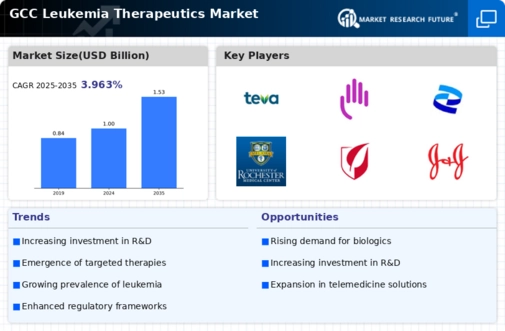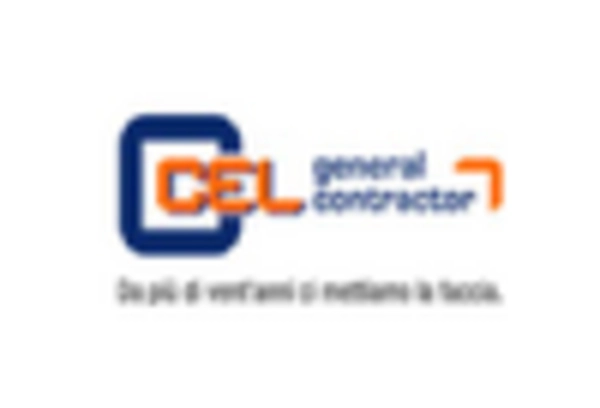Rising Incidence of Leukemia
The leukemia therapeutics market is experiencing growth due to the rising incidence of leukemia in the GCC region. Recent statistics indicate that leukemia cases have increased by approximately 15% over the past decade, prompting a greater demand for effective treatment options. This surge in cases is attributed to various factors, including environmental influences and genetic predispositions. As healthcare systems in the GCC strive to address this growing health concern, investments in innovative therapies are likely to rise. Consequently, pharmaceutical companies are focusing on developing new drugs and treatment protocols tailored to the unique needs of the population. This trend not only enhances patient outcomes but also drives the overall growth of the leukemia therapeutics market, as stakeholders seek to provide comprehensive care for affected individuals.
Growing Awareness and Education
Growing awareness and education regarding leukemia are significantly impacting the leukemia therapeutics market. Increased public knowledge about the disease, its symptoms, and treatment options is leading to earlier diagnosis and intervention. Educational initiatives by healthcare organizations and non-profits are helping to demystify leukemia, encouraging individuals to seek medical advice promptly. This heightened awareness is reflected in a reported 25% increase in screening rates across the GCC region. As more patients are diagnosed at earlier stages, the demand for effective therapies is expected to rise. Furthermore, healthcare providers are increasingly focusing on patient education, ensuring that individuals understand their treatment options and adhere to prescribed regimens. This trend not only enhances patient outcomes but also drives growth in the leukemia therapeutics market, as informed patients are more likely to engage in their treatment journey.
Government Initiatives and Funding
Government initiatives and funding play a crucial role in shaping the leukemia therapeutics market. In the GCC region, various health authorities are prioritizing cancer research and treatment, allocating substantial budgets to enhance healthcare infrastructure. For instance, recent reports suggest that government spending on cancer care has increased by over 20% in the last few years. This financial support facilitates the development of new therapies and clinical trials, fostering innovation within the leukemia therapeutics market. Additionally, public awareness campaigns aimed at early detection and prevention are likely to drive patient engagement and treatment adherence. As governments continue to invest in healthcare, the leukemia therapeutics market is expected to benefit from increased access to advanced treatment options and improved patient care.
Advancements in Diagnostic Technologies
The leukemia therapeutics market is significantly influenced by advancements in diagnostic technologies. Enhanced diagnostic tools, such as next-generation sequencing and liquid biopsies, have improved the accuracy of leukemia detection and monitoring. These innovations enable healthcare providers to identify specific genetic mutations and tailor treatment plans accordingly. As a result, the demand for targeted therapies is likely to increase, as patients receive more personalized care. Furthermore, the integration of artificial intelligence in diagnostics is streamlining the identification process, leading to earlier interventions. This shift towards precision medicine not only improves patient outcomes but also stimulates growth in the leukemia therapeutics market, as healthcare providers and pharmaceutical companies collaborate to develop effective treatment strategies based on precise diagnostic information.
Collaboration Between Pharmaceutical Companies
Collaboration between pharmaceutical companies is emerging as a key driver in the leukemia therapeutics market. Partnerships and alliances are being formed to leverage shared expertise and resources, accelerating the development of new therapies. These collaborations often focus on combining different treatment modalities, such as chemotherapy and immunotherapy, to enhance efficacy. Recent data indicates that joint ventures in the GCC region have led to a 30% increase in the number of clinical trials for leukemia treatments. This collaborative approach not only fosters innovation but also reduces the time required to bring new therapies to market. As companies work together to address the complexities of leukemia treatment, the leukemia therapeutics market is likely to see a surge in novel therapeutic options and improved patient outcomes.

















Leave a Comment